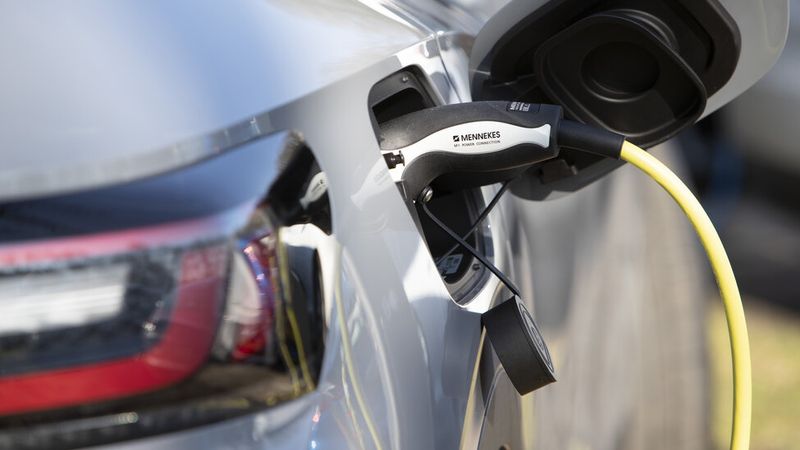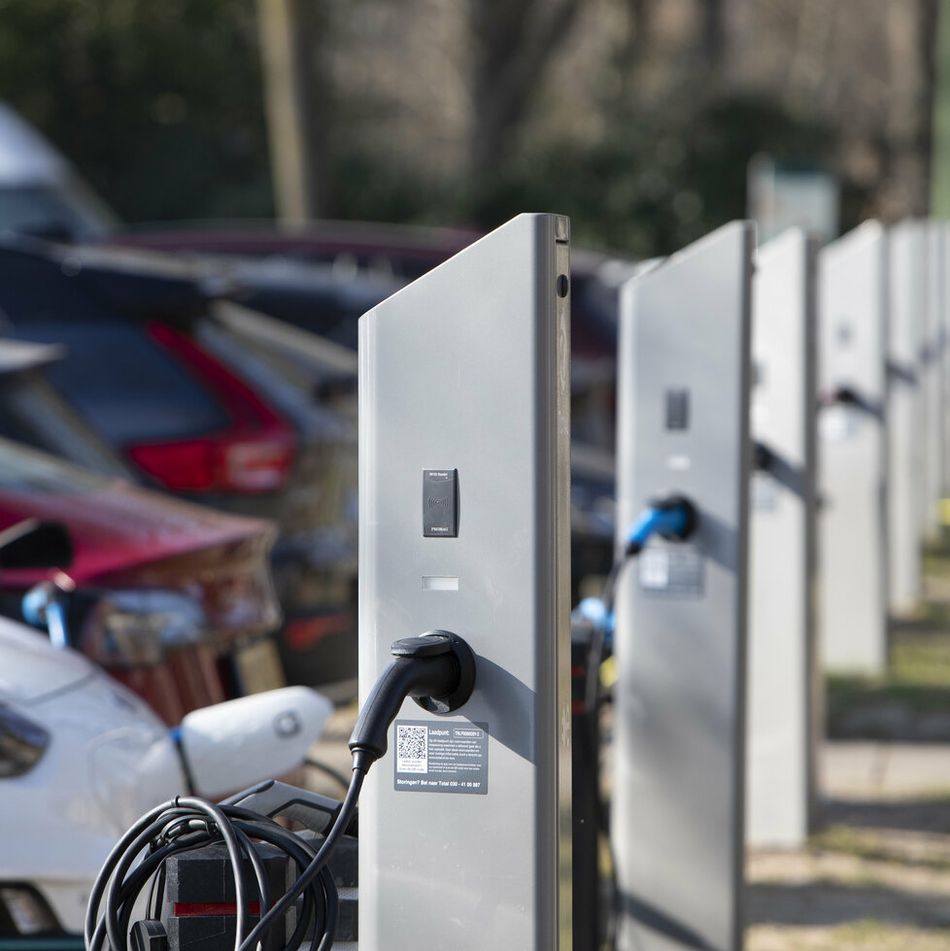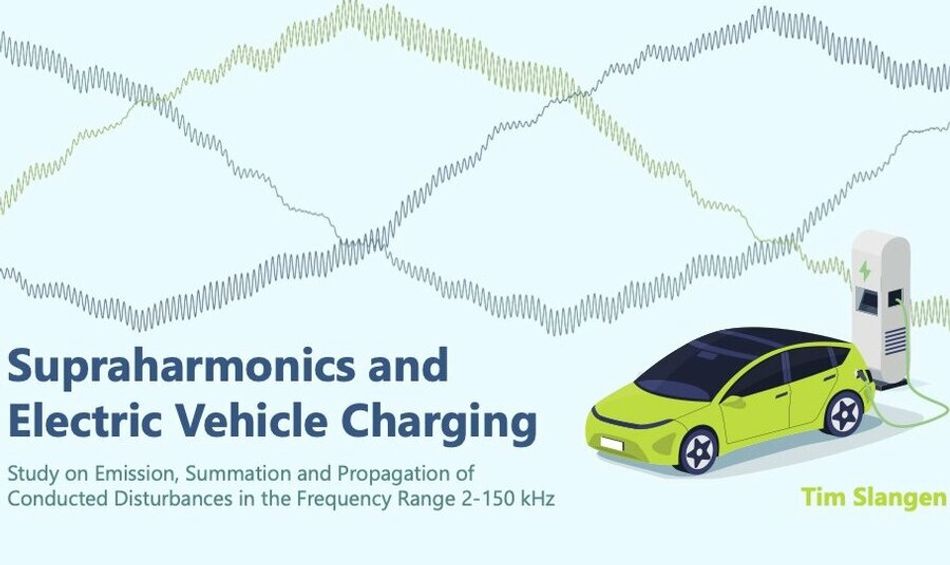Preventing power quality issues caused by electric vehicle charging
Along with ElaadNL, PhD researcher Tim Slangen studied the phenomenon known as supraharmonic disturbances, which can adversely affect the operation and efficiency of electrical appliances.

Photo: ElaadNL
This article was first published on
www.tue.nlWith the growing and obvious concerns about climate change, the transition from fossil to renewable energy is accelerating. The need for an accelerating transition also applies to the mobility sector where vehicles with internal combustion engines are being replaced by electric vehicles. However, charging these electric vehicles introduces several challenges for the electricity network in terms of capacity and power quality. For his PhD research, Tim Slangen studied one of the challenges relating to electric vehicle charging and how best to instigate the smooth integration of electric vehicles into the electricity system by preventing power quality disturbances.
The internal combustion engine (ICE) has been the mainstay in the motor industry for more than 100 years. A host of everyday transportation vehicles in the mobility sector rely on ICEs such as cars, buses, trucks, and construction equipment. Their use leads to pollution such as excess CO2 emissions, which contributes to climate change.
“We must take significant actions to reduce greenhouse gas emissions, and one way to do this is via electric vehicles,” says Tim Slangen, PhD researcher at the Department of Electrical Engineering.
Moving to electric vehicles comes with issues though, as Slangen points out. “New technologies are needed for the batteries, and there’s the need for proper charging infrastructure. Technical support for the user is also critical. And charging the batteries of an electric vehicle in an efficient manner by connecting the vehicle to the grid leads to challenges for the electricity network.”
Electric vehicles convert AC voltage from the electrical grid to DC voltage to charge the batteries of vehicles using a rectifier. “However, this charging if not done correctly can lead to power quality disturbances, one of which is known as supraharmonics,” says Slangen.
Supraharmonic disturbances
But what are supraharmonics? Slangen explains: “Supraharmonics are waveform distortions in voltage and current with a frequency between 2 and 150 kHz. ‘Supra’ means above or beyond, and refers to the disturbances being at a higher frequency than traditional harmonics.”
It’s a topic that has gained a lot of interest over the last decade due to the increase in unwanted interference effects on the electrical network, such as audible noise, failure of consumer electronics, failing of cable terminations, and problems with residual current protection devices. “The phenomenon is not new, but in the recent years, due to the increasing number of large devices, like electric vehicle chargers, the interference has become more prominent, ” adds Slangen.
With all of these issues at play with supraharmonics, a standard solution is required to prevent more interference in the future, particularly as more and more large devices like electrical vehicles are connected to the electricity network.
Rectifying the rectifier
Nowadays, rectifiers are commonplace in our daily lives such as in the charger for a mobile phone or in LED lamps. “Even these small devices create supraharmonic disturbances that should and need to be addressed,” says Slangen.
While the charging of these small devices can lead to supraharmonic disturbances for the electricity network, they are incomparable to the disturbances created by larger devices, such as electric vehicle chargers. “There is a drive to switch to electric vehicles, which is beneficial for the environment. But all of these vehicles plugged into the electricity network create new challenges, of which those related to supraharmonics.”
Several chargers
For his PhD research, Tim Slangen explored in detail the phenomenon of supraharmonic disturbances, with a particular focus on electric vehicle charging using a combination of laboratory and field experiments.
As part of his research, Slangen performed measurements at different locations throughout the Netherlands to determine the effects in several grids with multiple electric vehicle chargers. Data from these experiments helped provide insight into the nature of the disturbances in practice.
Then in the laboratory, Slangen tested several chargers, with these chargers subject to varying disturbances, different network configurations, and tested for all their operating conditions to obtain a “fingerprint” of their disturbances.

High frequency considerations
“Supraharmonic distortions are inherently high frequency, and this can affect electrical devices in many ways. For example, devices can heat up quite a lot, which is not usually experienced with traditional disturbances such as harmonics,” says Slangen. “This all means reduced lifetime and failure of components.”
Slangen’s work has identified several parameters that affect supraharmonics. “We found that the disturbances depend on the state-of-charge of the battery connected to the charger.”
All of this should be taken into account in future testing and certification of chargers, for instance by the ElaadNL test lab. From Slangen’s work, these findings are used to test all chargers and electric vehicles, even for issues that are not standardized yet.
Future ambition
Slangen’s future ambition is to work on the energy transition challenges and contribute to a better climate.
As of November 2023, Slangen is working as Grid Strategist Power Quality & Protection at Stedin, which is one of the three major distribution network operators in the Netherlands.
Further information
The research was in cooperation with the ElaadNL Testlab. Knowledge and innovation center ElaadNL research and test smart and sustainable charging of electric vehicles. ElaadNL is an initiative of the joint Dutch Grid Operators.
Tim Slangen defended his PhD thesis at the Department of Electrical Engineering on December 18th.
You can read more about Tim Slangen's work with ElaadNL in this article on the ElaadNL website.
Title of PhD thesis: Supraharmonics and Electric Vehicle Charging: Study on Emission, Summation and Propagation of Conducted Disturbances in the Frequency Range 2-150 kHz. Supervisors: J.F.G. Cobben and V. Cuk.
